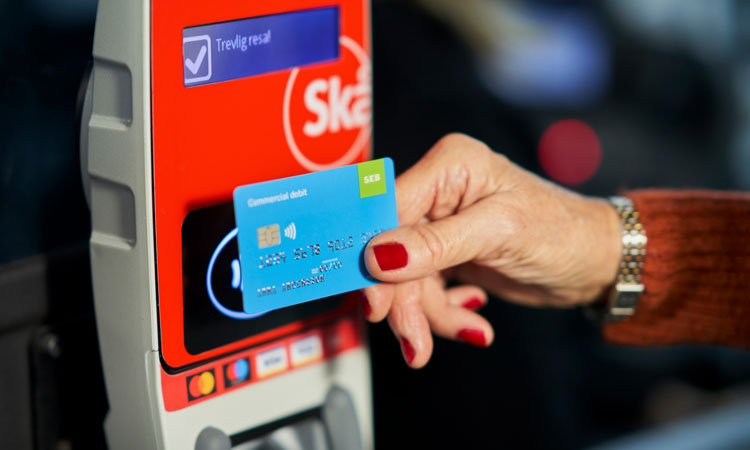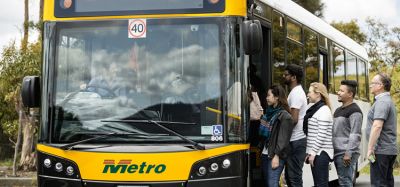Just the ticket: Skåne’s new approach to regional travel
- Like
- Digg
- Del
- Tumblr
- VKontakte
- Buffer
- Love This
- Odnoklassniki
- Meneame
- Blogger
- Amazon
- Yahoo Mail
- Gmail
- AOL
- Newsvine
- HackerNews
- Evernote
- MySpace
- Mail.ru
- Viadeo
- Line
- Comments
- Yummly
- SMS
- Viber
- Telegram
- Subscribe
- Skype
- Facebook Messenger
- Kakao
- LiveJournal
- Yammer
- Edgar
- Fintel
- Mix
- Instapaper
- Copy Link
Posted: 28 May 2020 | Mariell Hallenhed - Skånetrafiken
Mariell Hallenhed, Product Owner, Ticketing and Payment at Skånetrafiken, tells us about the organisation’s break from the traditional in creating its own bespoke ticketing system in-house.


Skånetrafiken’s new journey into ticketing began in 2015. We were facing the end of our current contract with the supplier of our ticketing system, which was due to end in 2019.
Traditionally, we always tender for systems off the shelf, but after a lot of work and study, we decided to take a different approach because we wanted to be in the driver’s seat. We wanted to be able to have a system that was futureproofed, so we decided not to tender for a system, but instead to tender for resources to help us build our own ticketing system in-house.
In 2016, we opened our development centre at Malmö Central. As the largest city in Skåne, Malmö is essentially the region’s hub for public transport, and our office is actually based within the central station. It’s a perfect location because we have plenty of traffic and plenty of customers to try out our prototypes. We made the decision that all of the staff working on the ticketing project needed to be on the same premises to enable proper coordination between parties. By prototyping and being innovative, our day-to-day work developed very short iterations, building, measuring and learning principles. We create a prototype, go downstairs, test ideas on a few customers, get some feedback and then get back up to the code. It’s an incredibly efficient method of working, and the short iterations mean that we have releases every Monday.
Keeping pace with technology
The development itself started in April 2016, and by March 2017, we were able to go live with our new sales and ticketing and payment back-end, a new consumer app and new validators in the buses that were prepared for EMV. We were also able to introduce barcode reading and a new handheld device for machine validation.
Traditionally, discussions might take place for three or four years before any form of work begins, but today’s transport providers cannot afford to do that. Public transport has been so behind for so many years; it needs to catch up with technology and the opportunities it offers. Working to build a system such as this – all online, all cloud-based – it becomes clear that in many ways it’s only our creativity that can limit us now. We have it all; we’re working with well-known components that can easily be swapped to keep ahead of future demands.
Skånetrafiken was the first organisation to develop such a system in-house, but now other organisations are starting their own development programmes working in-house too – SL for instance. We are aware that others are looking at us and our work. We had our first release in March 2017, but since then have been continuing development for all of our other sales channels and new features in the app. For instance, we have real-time information in the app that enables our customers to open it up, look at the map and see whether their bus is nearby.
Passengers also have the option of lending out their tickets to others through the mobile app, choosing the length of the ticket’s validity. This is something our customers love, especially as it’s a free-of-charge feature. A concept like this really places the customer at the heart of the experience, and our customers rightfully expect more of us today. Using our old ticketing system, if a customer were to top up their travel card €20, it took 24 hours before they could actually use the credit. In 2020, that sort of delay is simply not an option.
A new pricing model
When we started developing our new system, we also analysed the pricing in our old system, which had around 15 different price levels and multiple zones with a wide range of offers and discounts. It was too complicated and our customers didn’t understand why; for instance, as a student you could get discounts on some tickets and not others – it just wasn’t logical. We realised we needed to backtrack a little and remove the complexity that had grown over time with the continual introduction of new passes, tariffs and offers.
We introduced a completely new pricing model that is distance based. We went from around 200 zones down to three, applying t-shirt sizes – Small, Medium and Large, where Large is the whole of Skåne.
We also decided to keep discounts simple – if someone qualifies for a discount, such as students, the discount will apply to all of their tickets. We also created what we call ‘Personal Zones’, meaning that a customer’s travel pass can be personalised to their chosen destinations. It gives a customer the map and allows them to choose which places they want to travel to using their travel pass, whether it’s a 30-day or a two-hour pass. The customer just adds their different stop points and, based on them, we create their Personal Zone and give them a price for it. Within that zone they can travel as much as they like in any direction during the validity period. It’s very flexible and completely personal because this zone can be placed anywhere the customer chooses on our map.
Some customers have started to realise that their normal stops might mean they’re in a Large zone, but find this too expensive, so instead decide to walk a few hundred metres to a bus stop that will make their zone Medium and therefore cheaper. It really is up to the customer to choose and Personal Zones give them the power to build the journey that they want.
Our new system has been live for almost three years now with our new consumer app and price model, but it was available in parallel with the old system, and the old price model. We decided to use this transition period to enable our customers to use the system they prefer, up until the close of the old price model at the end of 2019. We have seen an increase in people moving over to using the consumer app instead of their old traditional travel card; at the end of 2019, 75 per cent of our customers were using the app for their travel.
Tap and ride
We have also rolled out a tap-and-ride solution with contactless EMV on all of our city buses. When travelling in the 10 cities in Skåne, the only way to pay for bus-only travel is by contactless. Passengers just tap their card and get a single ticket, valid for one hour. If they tap again after an hour in the same city, we automatically upgrade this to a 24-hour ticket. Once again, the customer is at the heart of the service. Their journey can be flexible and they are assured that we will always serve them with the cheapest tickets.
This simplicity really helps to encourage spontaneous travel. There’s no need for the customer to know what they’re doing a day in advance before they travel – it should be as easy as just getting on and getting off. They can use their smartphone, their wallet, their smartwatch and so on. These are the kinds of solutions we need to be working on. We don’t really want to sell tickets – we just want people to travel and pay for their trips.
Buying tickets should never be an obstacle to using public transport. It’s still up to us to find and work on solutions that the customer wants.
Enabling greater operational flexibility
We tender for and buy hardware and sales equipment in the traditional way, but we are responsible for developing the software. Ridango, for example, provided us with the validators for our system, following a successful bid for our tender. Naturally, we exchange ideas and discussions with hardware and software companies, and they are often keen to give their advice. However, we want to be in charge of the system and be able to do what our customer needs when they want it. We don’t want to wait for long release periods, because, in reality, that often is the case if you’re a small customer to a supplier.
By not being tied to a lengthy contract with one supplier, we have more freedom. It effectively enables us to update and develop our system as we go – a real advantage considering how quickly everything is evolving. We have much work we want to do on our roadmaps in the next five years. Even if we develop our roadmap as we intend for three years, there will inevitably be new technology available in three years’ time, which we will need to review.
The natural next step for us is to think about removing the card altogether. We have an ID-based system already in use, but with a card for those who want to hold onto the plastic. I don’t believe the market is mature enough yet to remove it altogether, but in five years’ time though, who knows?
The next step for us would be Check-in, Be-out, and then eventually Be-in, Be-out; people want fewer and fewer interactions in their routes of travel and these types of systems would enable that. The whole transport sector, not only public transport, has to adapt and start thinking in different ways to leave the traditional behind.


Related topics
Ticketing & Payments
Issue
Issue 1 2020
Related cities
Sweden
Related organisations
Skånetrafiken
Related people
Mariell Hallenhed








